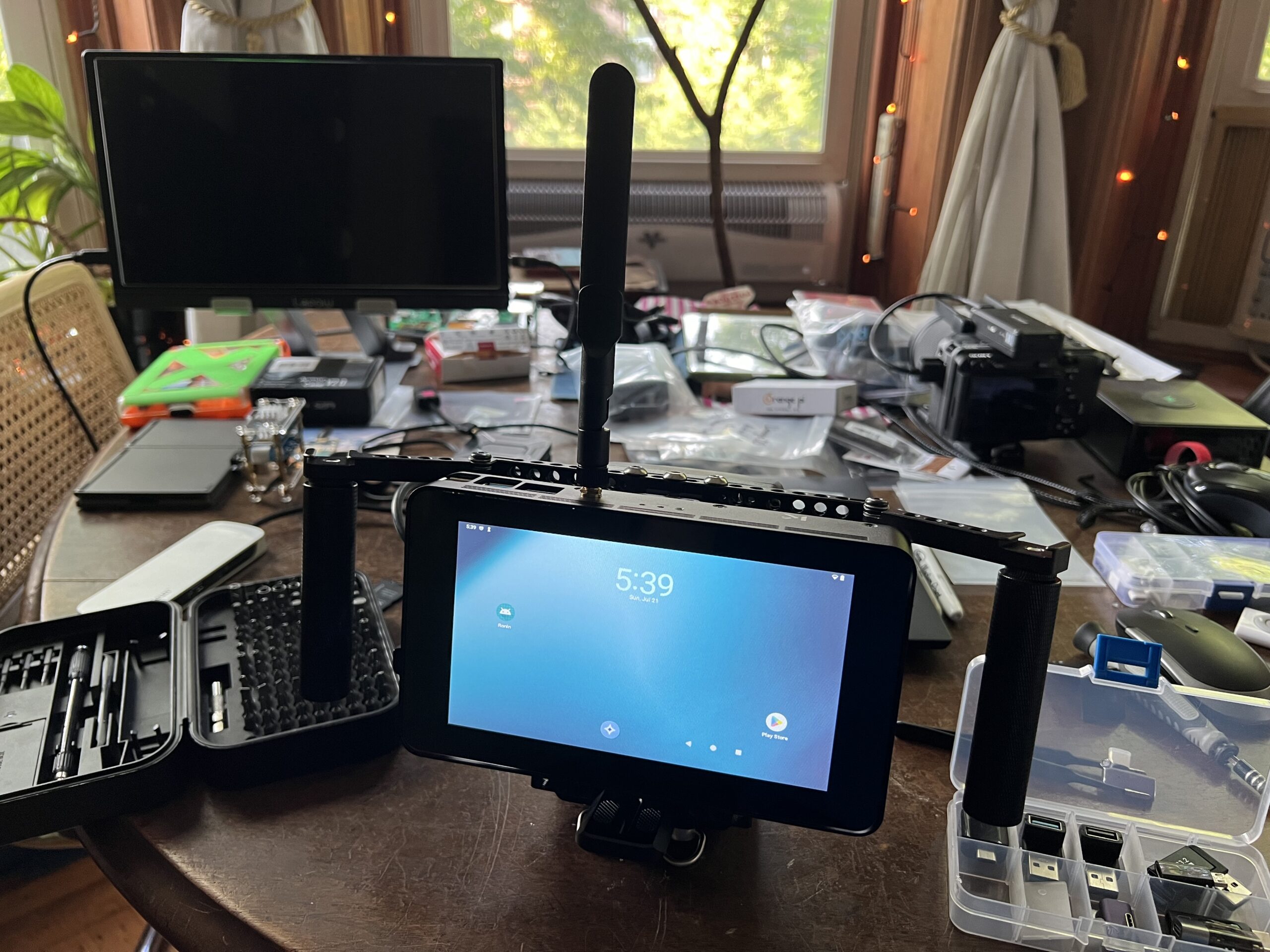A DIY wireless monitor solution for gimbal-stabilized documentary filmmaking using a Raspberry Pi 4B, LineageOS, and DJI wireless transmission.
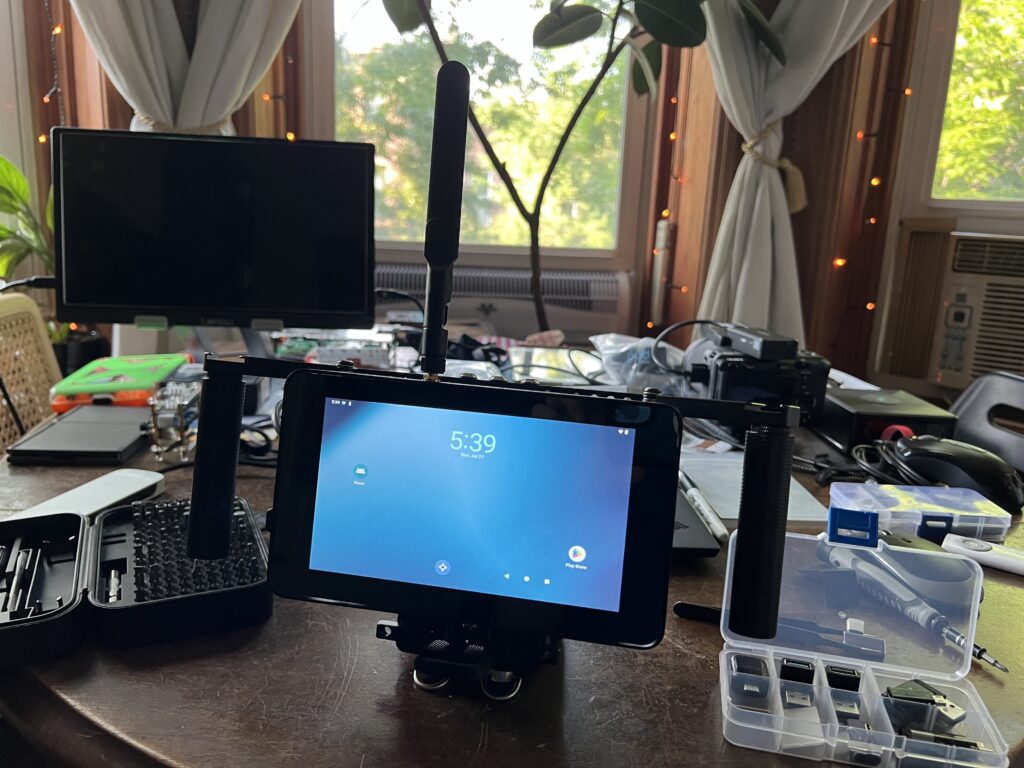
When my wife embarked on directing a feature documentary using a gimbal-stabilized camera system, we faced a common challenge: how to monitor the footage without compromising the camera’s mobility. Traditional wired solutions weren’t viable – connecting HDMI or SDI cables to a gimbal-mounted camera would interfere with its stabilization. This led me down the path of creating a custom wireless monitoring solution that would allow her to direct effectively while maintaining the ethereal, floating aesthetic she envisioned.
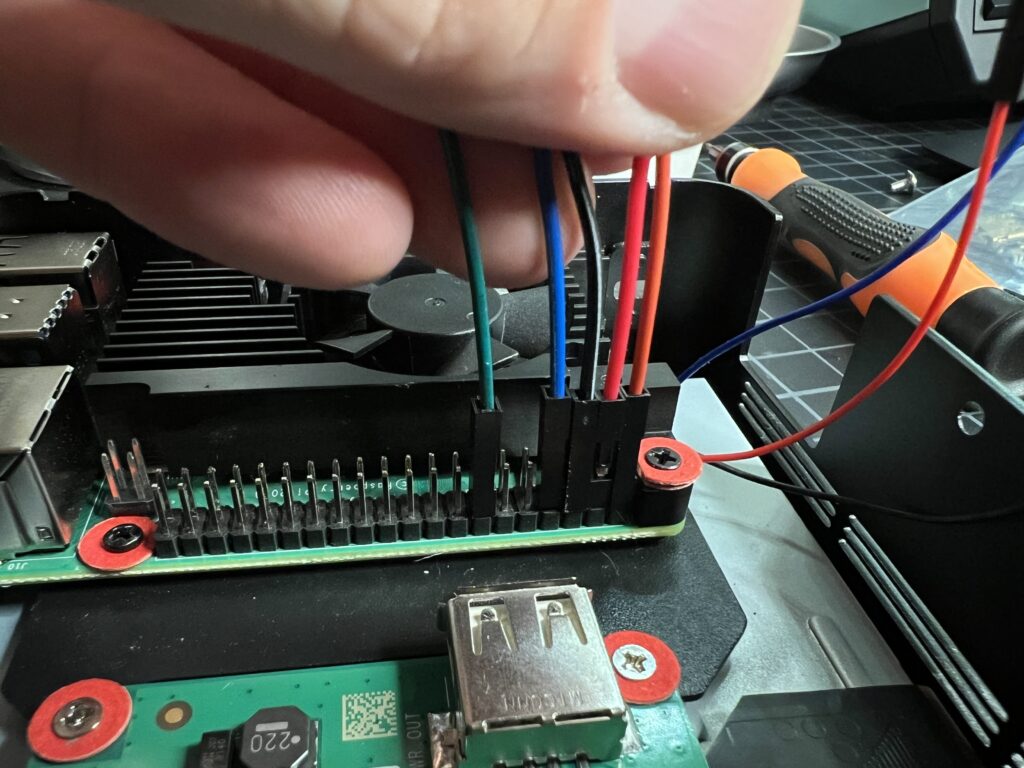
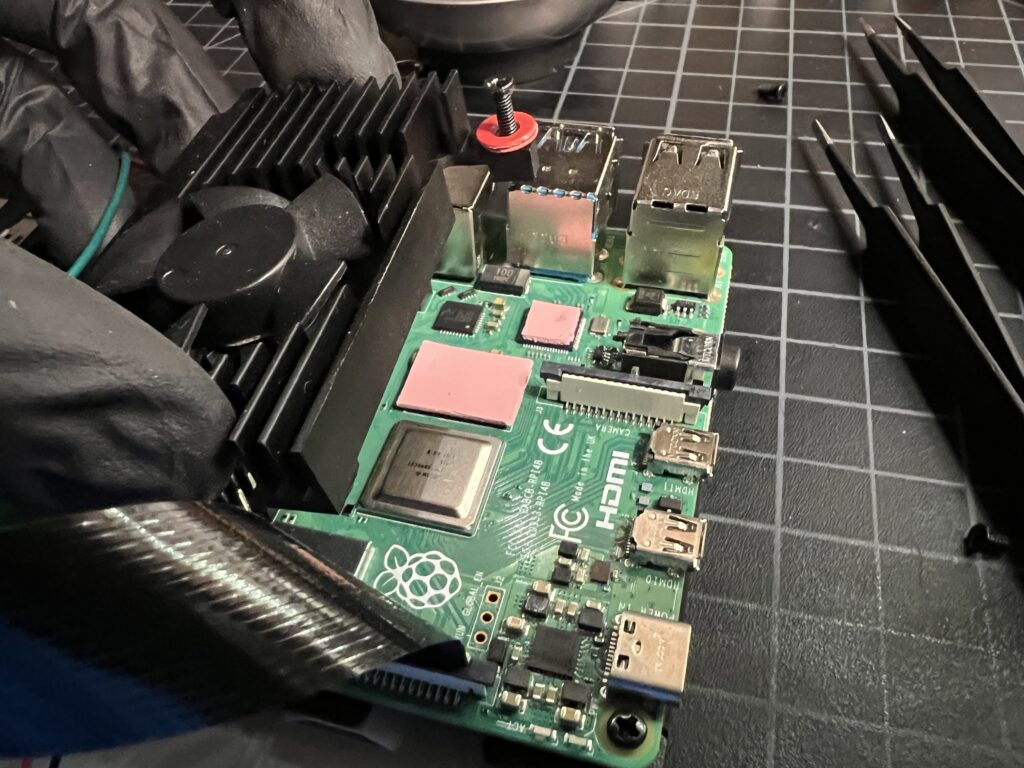
Touchscreen GPIO configuration and installing the fan-cooled heat sink
The Technical Challenge
The project centered around leveraging the wireless capabilities of her Sony FX30 camera system. The camera connects to a DJI wireless transmitter mounted on the hot shoe, broadcasting both video and audio signals over 2.4 and 5.8 GHz frequencies. The challenge was creating a reliable, portable receiver that could handle this feed while remaining mobile enough for documentary work.

Sony FX-30 installed on a DJI Zenmuse gimbal system
Hardware Solutions and Iterations
My journey began with testing smaller single-board computers. The Raspberry Pi Zero 2 W and Orange Pi 02W (4GB variant) seemed promising initially due to their compact size and lower power consumption. However, while the Orange Pi had sufficient horsepower, I encountered authentication issues with the Android app. This led me to the more robust Raspberry Pi 4B solution.
The final hardware configuration included:
- Raspberry Pi 4B as the core computing unit
- 7″ Raspberry Pi Touch – touchscreen LCD display
- Custom-soldered Wi-Fi antenna system with SMA adapter
- Aluminum case (sub-$50 from Amazon)
- V-Lock battery power system
- Aluminum monitor handles for mobility
- Padded shoulder strap for extended use
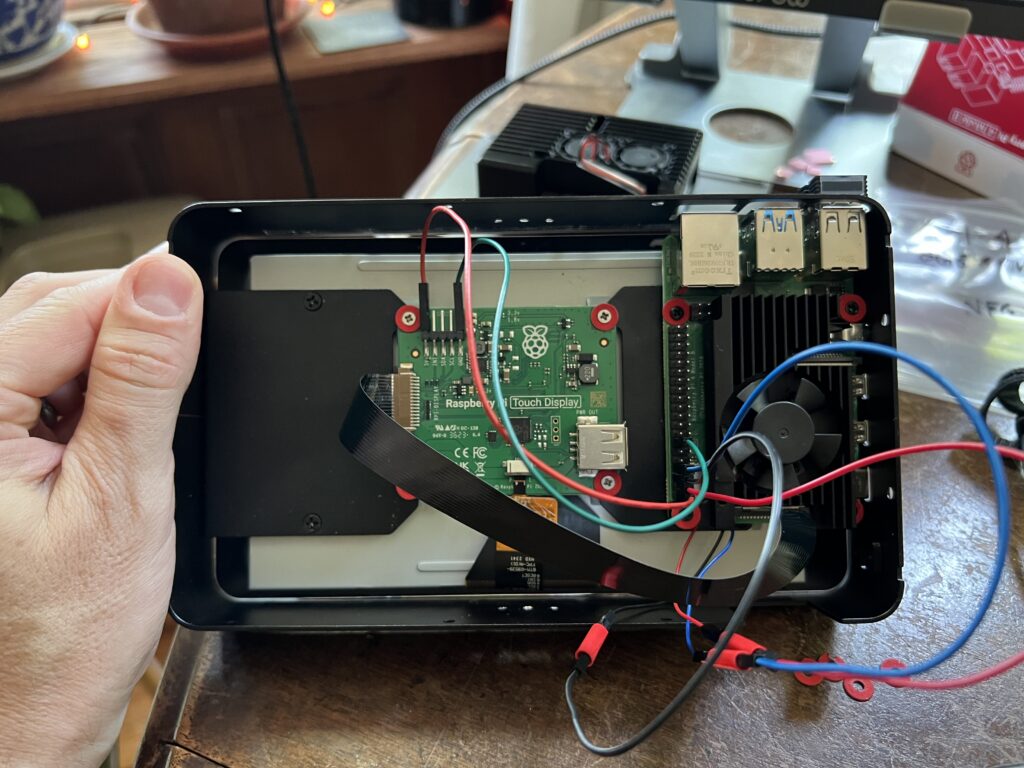
The RPi 7″ touchscreen includes an interface board for easy install
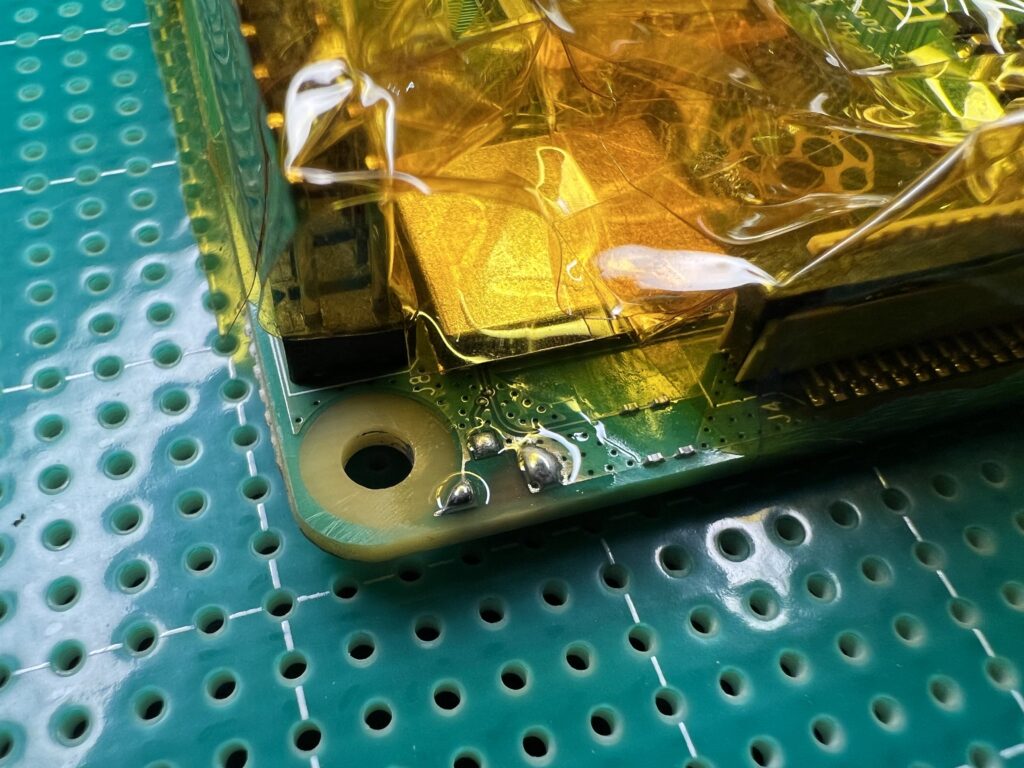
Custom wifi-SMA adapter installation = messy minuscule soldering job
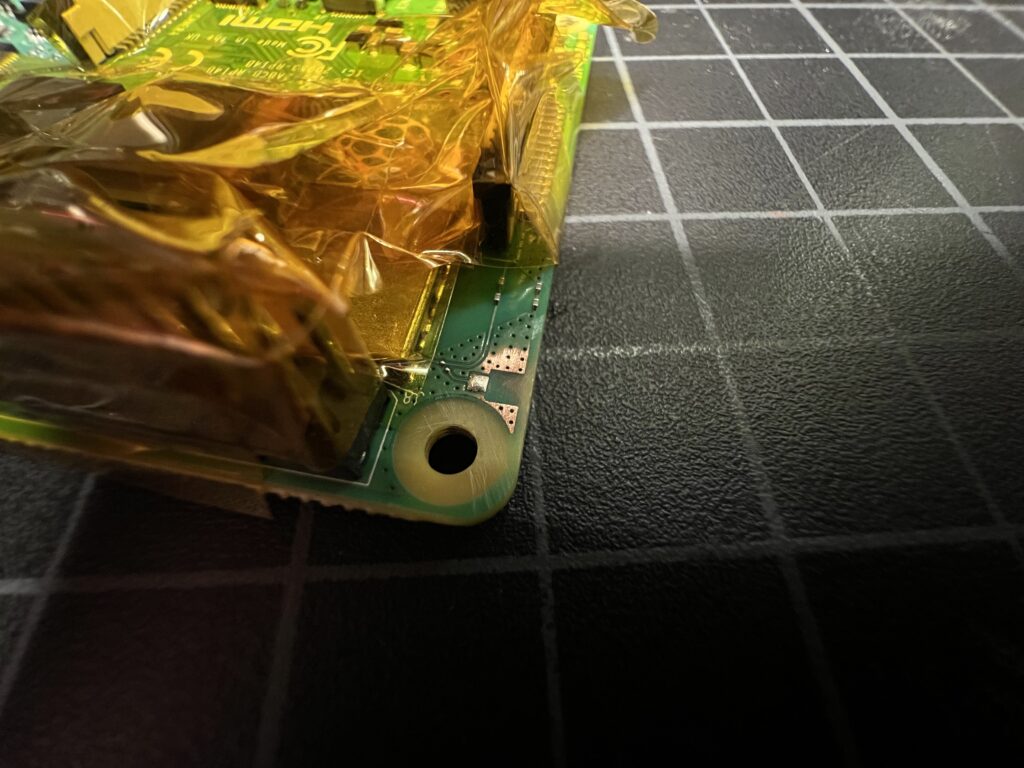
Sanding down to the copper to reveal the solder points for custom wifi antenna
Software Implementation
The software side centered around LineageOS, a custom Android distribution specifically tailored for Raspberry Pi systems. This allowed me to run the necessary DJI Ronin app for receiving the wireless feed. The touchscreen functionality essentially turned the unit into a powerful tablet, capable of not just monitoring but also potentially handling other production tasks.
Power Management
While the Raspberry Pi 4B’s higher power consumption initially concerned me, I resolved this by repurposing professional V-Lock batteries from my cinema camera kit. The system achieves:
- 6 hours of standby time per battery
- Approximately 4 hours of active monitoring
- Quick 2-hour recharge time
- Hot-swappable battery capability with dual battery setup
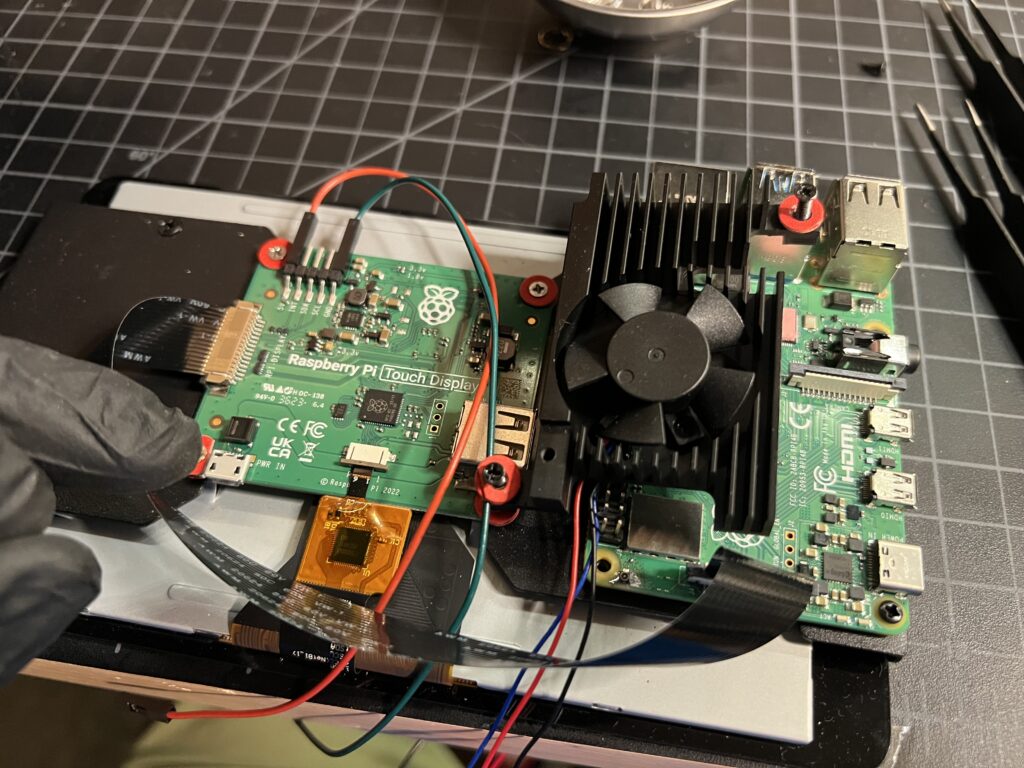
Display and interface board powered via RPi 4b GPIO pins
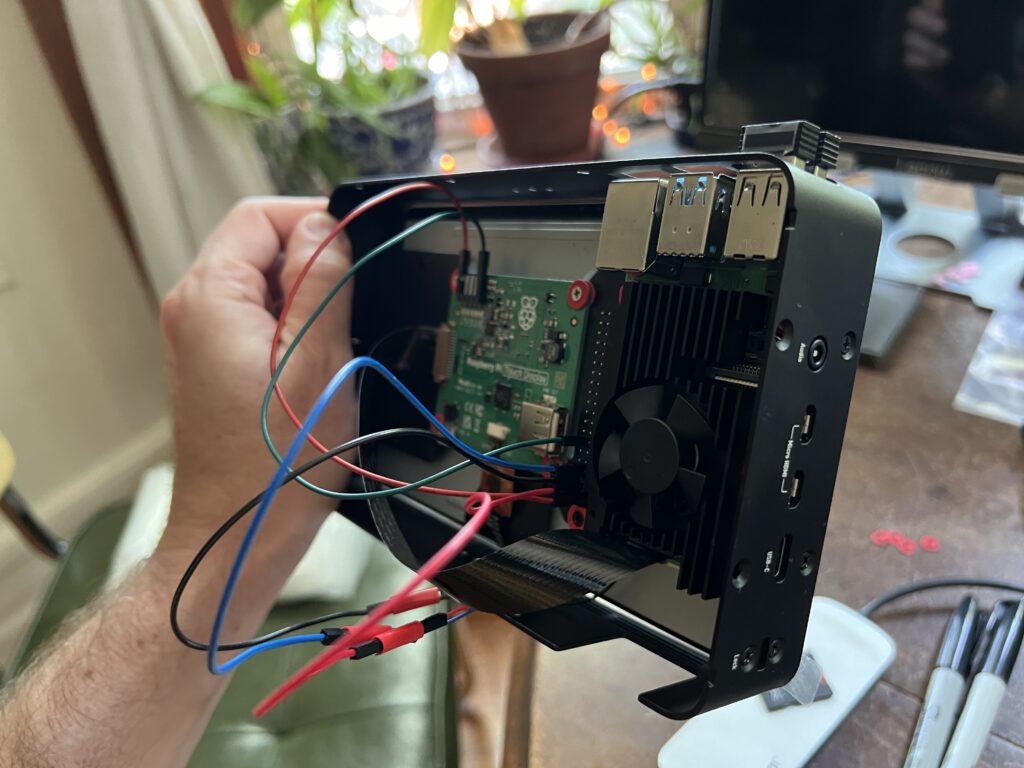
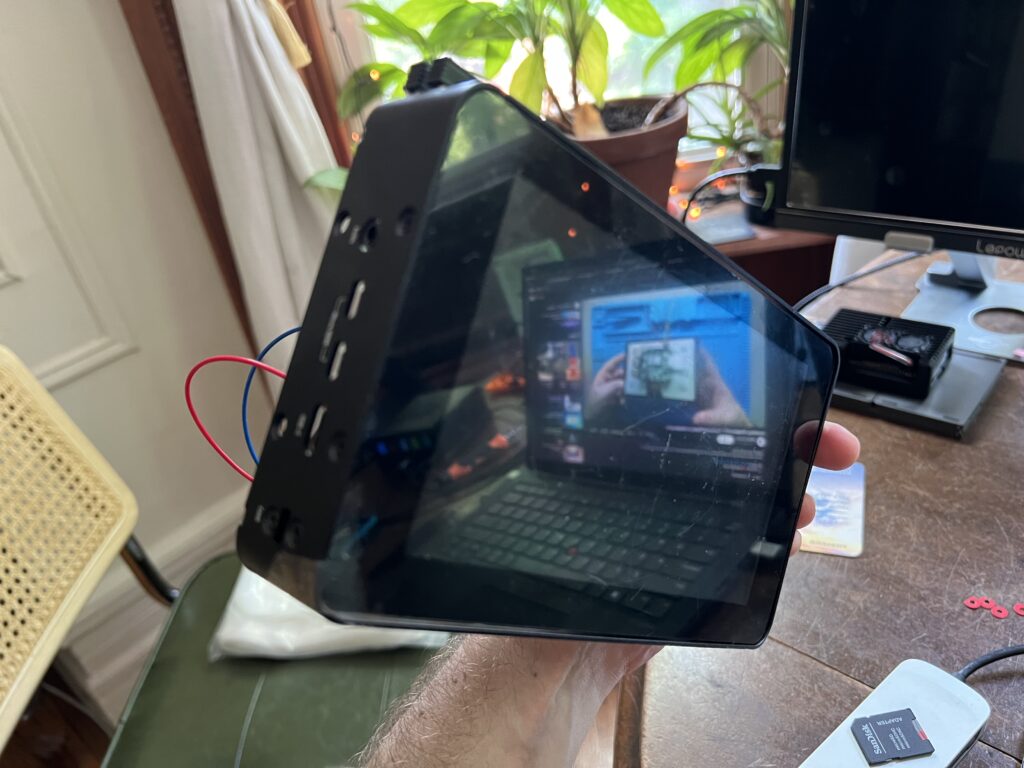
Additional power, display, and USB ports for optional accessories
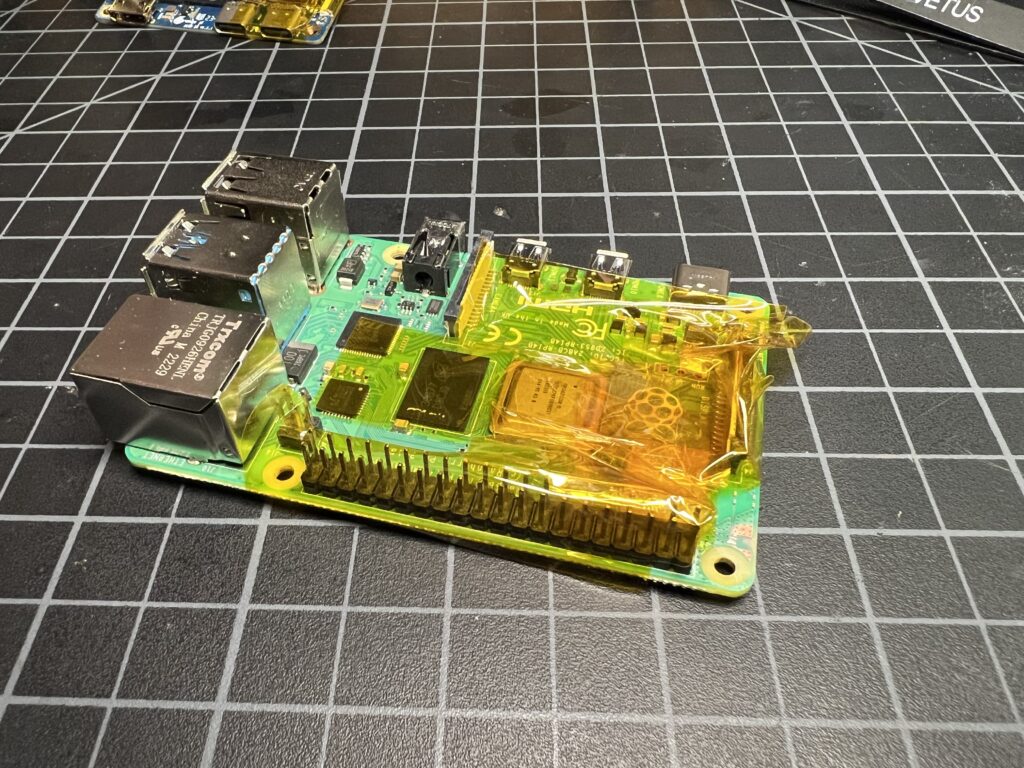
Thermal tape was necessary to protect the delicate SBC when soldering
Lessons Learned
This project opened up several new areas of expertise for me:
- Single-board computer implementation and capabilities
- Custom Android distributions like LineageOS
- RF transmission and antenna design considerations
- Power management for mobile video systems
- Android app compatibility with SBCs
Future Improvements
Looking ahead, several potential upgrades could enhance the system:
- Implementing 4G/5G connectivity for remote uploading capabilities
- Exploring newer single-board computers with better GPU capabilities
- Improving RF shielding to enhance signal strength
- Potentially migrating to a more power-efficient platform like the Orange Pi Zero 2W if authentication issues can be resolved
Conclusion
This open-source wireless monitor project not only solved our immediate production needs but also demonstrated the versatility of single-board computers in professional filmmaking applications. While there’s always room for improvement, particularly in areas like RF shielding and power efficiency, the current system provides a reliable, professional-grade monitoring solution at a fraction of the cost of commercial alternatives.
The project also highlighted the tremendous potential of the Raspberry Pi ecosystem beyond typical hobbyist applications. From scientific research to municipal infrastructure monitoring, these powerful little computers continue to prove their worth in professional applications. As the community around single-board computers grows, particularly with emerging options like the Orange Pi and RADXA systems, the possibilities for custom professional video tools for the entertainment industry will only expand.
